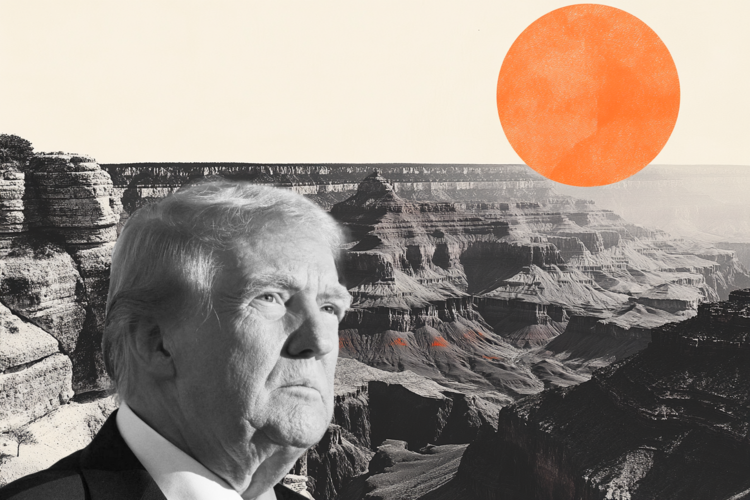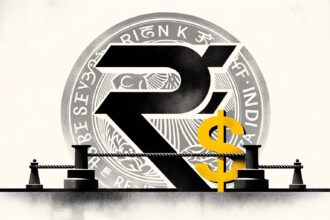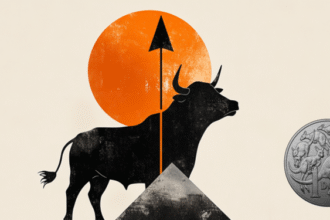The week opened like a trader’s hangover after Friday’s tariff-fueled binge — screens still smoldering from a 2.7% S&P drawdown and a volatility spike that sent even seasoned pros reaching for the Pepto. Yet, before Asia’s opening bell could fully register the wreckage, Trump did what he’s done so many times before — reached for the “TACO” button. Traders’ shorthand: Trump Always Chickens Out.
And just like that, the market’s indigestion turned into a mini sugar rush. S&P futures ripped nearly 1%, oil found its footing, and Treasury futures slumped as the risk-on crowd poured back in. It was less about faith in fundamentals than muscle memory — traders know this playbook by heart. Trump blusters, markets wobble, and then he tweets out a conciliatory bromide about his “highly respected friend Xi,” as though a diplomatic grenade can be defused with three exclamation points.
But let’s not kid ourselves — this isn’t an official détente, it’s pre-negotiation theater. The Xi-Trump truce dance has entered its foggy “mutual posturing” phase, where both sides look tough for domestic audiences while quietly back-channeling toward a November handshake. Markets have seen this rodeo before. The bulls know it’s rarely fatal, but it’s also rarely free — every tariff threat leaves a scar somewhere in the supply chain, and the longer the uncertainty lingers, the more traders start pricing in the bruises.
Still, for now, the bounce feels less like conviction and more like reflex. Risk assets have been on a nearly uninterrupted upward tear this year, turbo-charged by AI capex, rate-cut optimism, and that euphoric sense that productivity miracles will paper over any macro missteps. When you’ve been sprinting for months on a cocktail of liquidity and narrative, even a modest pullback feels like a heart attack. That’s why Friday’s selloff hit so hard — traders simply forgot what pain felt like.
Trump’s “don’t worry about China” Truth Social post was the ultimate sedative. He called Xi’s move to curb rare-earth exports a “bad moment,” as if Beijing merely stubbed its toe instead of declaring a new front in the tech war. The White House’s weekend pivot — from saber-rattling to softly-spoken deal talk — was pure Trumpian calibration. The message to voters: tough on China. The message to markets: relax, your 401(k)s are safe.
Meanwhile, Vice President JD Vance tried his hand at geopolitical sermonizing, urging Beijing to “choose the path of reason.” The market read that as Washington’s coded way of saying, “We’ve pushed hard enough; let’s not blow up the NASDAQ before earnings season.”
China, for its part, isn’t exactly strutting. The housing data tells a sobering tale: new home sales down 33%, existing homes off 55% year-on-year — numbers that scream deflationary drag. Rare-earth saber rattling isn’t confidence; it’s compensation. China isn’t playing hardball from a position of strength — it’s using its mineral trump card because the export engine is sputtering. If tariffs stick, that sputter could become a stall.
And that’s where things could still turn messy. If Xi refuses to blink and Trump feels boxed in by political optics, China could weaponize the yuan. A devaluation would set off a chain reaction that makes April’s bond tantrum look quaint: Treasuries rally hard, JPY and EUR debt buckle, and every emerging market with dollar debt — from Argentina to Turkey — goes into damage control.
For now, though, the market wants to believe the TACO script will hold: a few fiery headlines, a handshake photo op, and a risk-on relief rally to carry us into year-end. But this is not a risk-free buffet. Volatility has doubled in 24 hours, and the smarter money is already scaling back — smaller position sizes, tighter stops, and more defensive hedges. Traders aren’t panicking, but they’re respecting the tape.
Under the surface, the U.S. economy itself looks like a 5,000-piece jigsaw puzzle spread across the trading desk. One half spells “soft landing,” the other whispers “late-cycle slowdown.” On one side: resilient spending, fat household balance sheets, and an AI capex boom that seems impervious to business cycles. On the other: weakening job creation, wage stagnation, and the lagged poison of tariffs creeping into manufacturing margins.
This fork in the road is where policy, positioning, and psychology collide. If growth holds, the Fed’s next cut might be the last — a final nod to insurance easing before normalization. But if the slowdown deepens, the market’s current pricing of two more cuts could be conservative. Either way, one side of the asset spectrum is wrong — and probably very wrong.
The reality is that markets are trapped in a Schrödinger’s economy: both hot and cold at once, depending on which data set you stare at. Until the box is opened — likely via CPI or payrolls — traders will keep oscillating between fear of missing out and fear of getting caught.
So yes, this rebound is real, but it’s also fragile — a reflexive trade rather than a renaissance. It’s not quite a mini Black Monday, but it’s not yet Goldilocks either. It’s TACO Tuesday ahead of schedule, where the menu looks tasty, but everyone knows the kitchen could catch fire at any moment.
And in that kind of market, you don’t over-order. You nibble, you hedge, and you keep one hand on the exit.




















